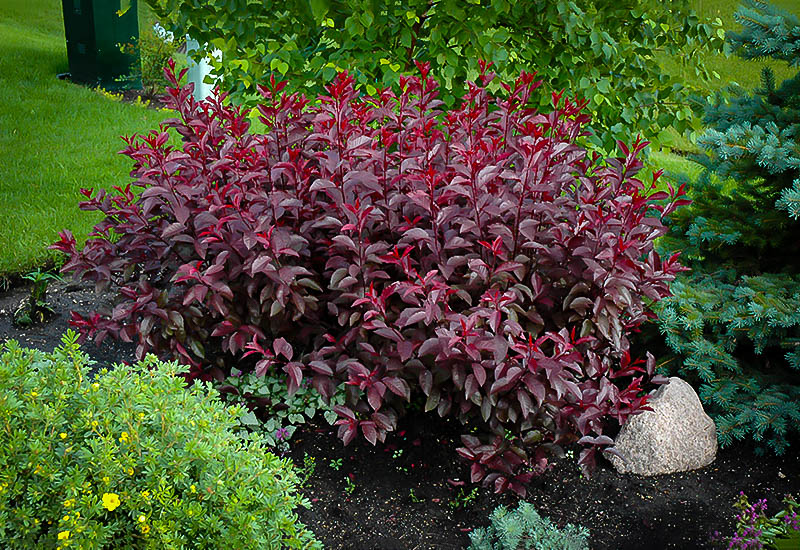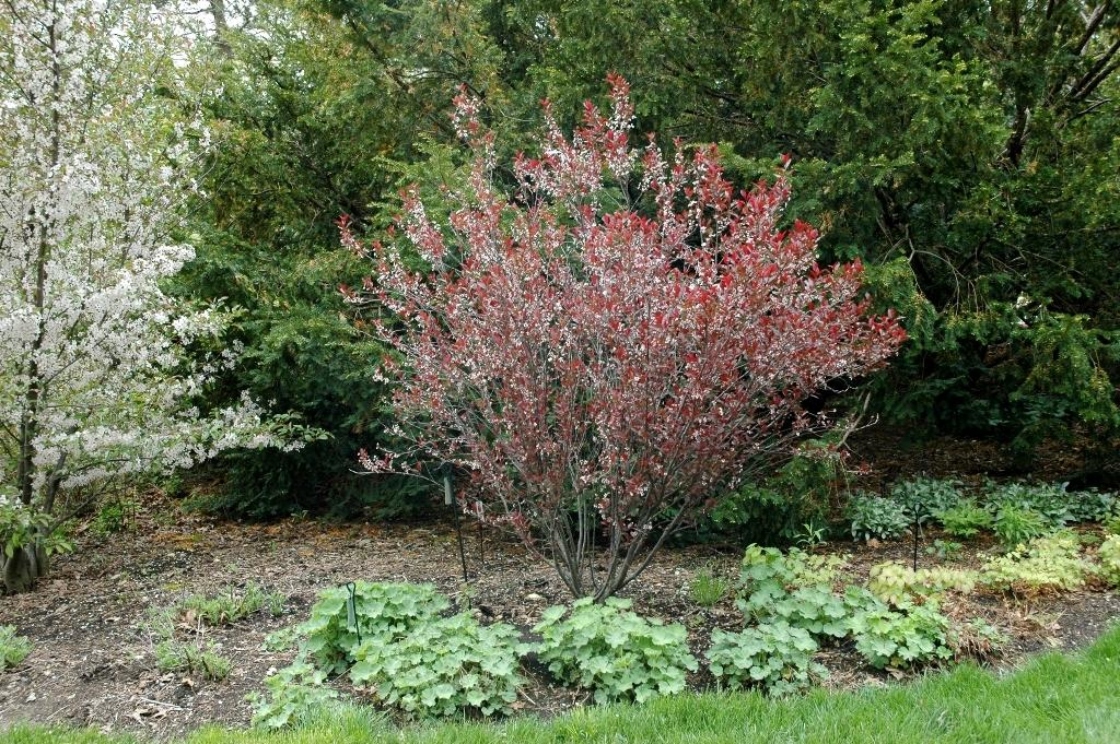The Sand Cherry Shrub: A Beautiful And Easytogrow Plant
The Sand Cherry Shrub: A Beautiful and Easy-to-Grow Plant
The sand cherry shrub is a beautiful and versatile plant that can add a touch of color and interest to any landscape. It is known for its stunning purple foliage, which is especially eye-catching in the spring and fall. Sand cherries are also relatively easy to grow, making them a great choice for even the most novice gardener.
In this blog post, we will discuss the following:
- The different types of sand cherry shrubs
- How to choose the right sand cherry shrub for your landscape
- How to plant and care for sand cherry shrubs
- The benefits of growing sand cherry shrubs
Types of Sand Cherry Shrubs
There are several different types of sand cherry shrubs, each with its own unique characteristics. Some of the most popular types include:
- Purple leaf sand cherry: This is the most common type of sand cherry shrub. It has dark purple foliage that turns a brilliant red in the fall.
- White sand cherry: This type of sand cherry shrub has white flowers and green foliage. It is a bit less hardy than the purple leaf sand cherry, but it is still a beautiful and easy-to-grow plant.
- Jade Parade sand cherry: This type of sand cherry shrub has dark green foliage with a slight purple tint. It is a bit more compact than the purple leaf sand cherry, making it a good choice for smaller gardens.
Choosing the Right Sand Cherry Shrub for Your Landscape
When choosing a sand cherry shrub for your landscape, there are a few factors to keep in mind:
- Hardiness zone: Sand cherry shrubs are hardy in USDA zones 3-8. So, if you live in a cold climate, you will need to choose a hardy variety.
- Sun exposure: Sand cherry shrubs prefer full sun, but they can also tolerate partial shade.
- Soil type: Sand cherry shrubs prefer well-drained soil.
- Size: Sand cherry shrubs can grow to be 6-10 feet tall and wide. So, you will need to choose a size that is appropriate for your space.
Planting and Caring for Sand Cherry Shrubs
Sand cherry shrubs are relatively easy to plant and care for. Here are a few tips:
- Plant sand cherry shrubs in the spring or fall.
- Choose a location that gets full sun or partial shade.
- Amend the soil with compost or other organic matter.
- Water the shrub regularly, especially during the first year.
- Fertilize the shrub in the spring with a balanced fertilizer.
- Prune the shrub in the spring to remove dead or diseased branches.
Benefits of Growing Sand Cherry Shrubs
There are many benefits to growing sand cherry shrubs. Some of the most notable benefits include:
- Beautiful foliage: Sand cherry shrubs have stunning purple foliage that is especially eye-catching in the spring and fall.
- Easy to grow: Sand cherry shrubs are relatively easy to grow, making them a great choice for even the most novice gardener.
- Drought tolerant: Sand cherry shrubs are drought tolerant, making them a good choice for areas with hot, dry summers.
- Attract pollinators: Sand cherry shrubs attract pollinators, such as bees and butterflies.
- Edible fruit: Some types of sand cherry shrubs produce edible fruit.
Conclusion
Sand cherry shrubs are beautiful, easy-to-grow plants that can add a touch of color and interest to any landscape. If you are looking for a low-maintenance plant that is both attractive and beneficial, a sand cherry shrub is a great option.
Sand cherry shrubs are a beautiful and versatile addition to any garden. They are hardy, drought-tolerant, and can be grown in a variety of soil conditions. Sand cherries also bloom in early spring, providing a welcome burst of color after a long winter.
If you are interested in learning more about sand cherry shrubs, I recommend visiting the Garden Wiki. This website has a wealth of information about sand cherries, including their history, cultivation, and uses. You can also find photos and illustrations of sand cherry shrubs, as well as links to other resources.
FAQ of sand cherry shrub
Question 1: What is a sand cherry shrub?
Answer: A sand cherry shrub is a deciduous shrub that is native to North America. It is known for its beautiful pink or white flowers that bloom in spring, and its edible fruits that are a good source of vitamins and minerals. Sand cherry shrubs are relatively easy to care for and can be grown in a variety of climates.
Question 2: How to plant a sand cherry shrub?
Answer: Sand cherry shrubs can be planted in the spring or fall. When planting, choose a location that receives full sun and has well-drained soil. Amend the soil with compost or other organic matter before planting. Dig a hole that is twice the width of the root ball and just as deep. Place the shrub in the hole and backfill with soil, tamping down gently. Water the shrub well after planting.
Question 3: How to care for a sand cherry shrub?
Answer: Sand cherry shrubs are relatively low-maintenance. Water them regularly during the first year after planting, especially during hot, dry weather. Mulch around the base of the shrub to help retain moisture and suppress weeds. Fertilize the shrub in spring with a balanced fertilizer. Prune the shrub in late winter or early spring to remove dead, diseased, or crossing branches.
Question 4: What are the benefits of sand cherry shrubs?
Answer: Sand cherry shrubs offer a number of benefits, including:
- Beautiful flowers that attract pollinators
- Edible fruits that are a good source of vitamins and minerals
- Drought-tolerant and easy to care for
- Attract wildlife, such as birds and butterflies
Question 5: How to propagate sand cherry shrubs?
Answer: Sand cherry shrubs can be propagated by seed, cuttings, or layering. Seed propagation is the most common method, but it can be slow and unpredictable. Cutting propagation is a more reliable method, but it requires a bit more skill. Layering is a simple method that is often used to propagate sand cherry shrubs.
Image of sand cherry shrub
5 different images of "sand cherry shrub" from Pinterest:
- Image 1: A sand cherry shrub in full bloom, with its pink flowers and reddish-purple leaves.
- Image 2: A close-up of the pink flowers of a sand cherry shrub.
- Image 3: A sand cherry shrub in fall, with its leaves turning orange and red.

- Image 4: A sand cherry shrub in winter, with its bare branches.
- Image 5: A sand cherry shrub in a garden setting, with other plants and flowers.

Post a Comment for "The Sand Cherry Shrub: A Beautiful And Easytogrow Plant"